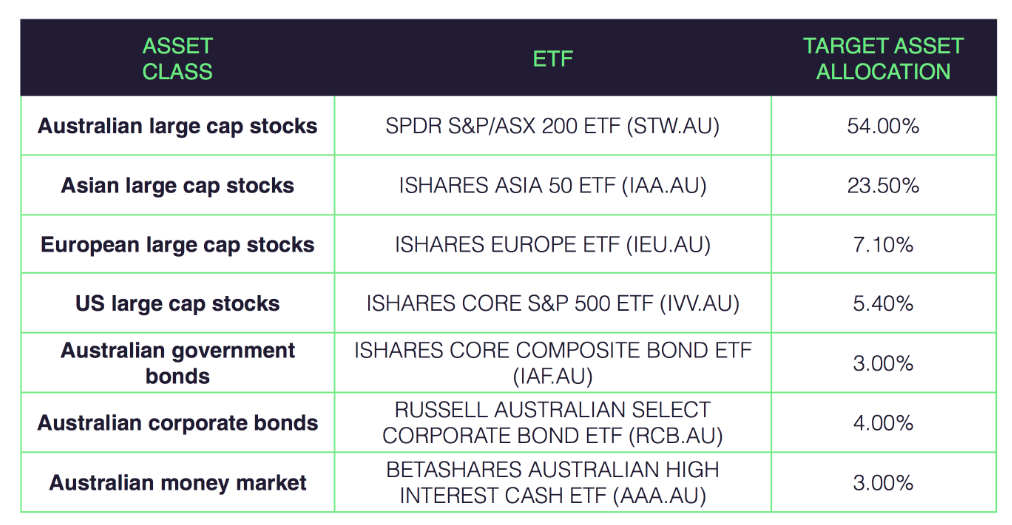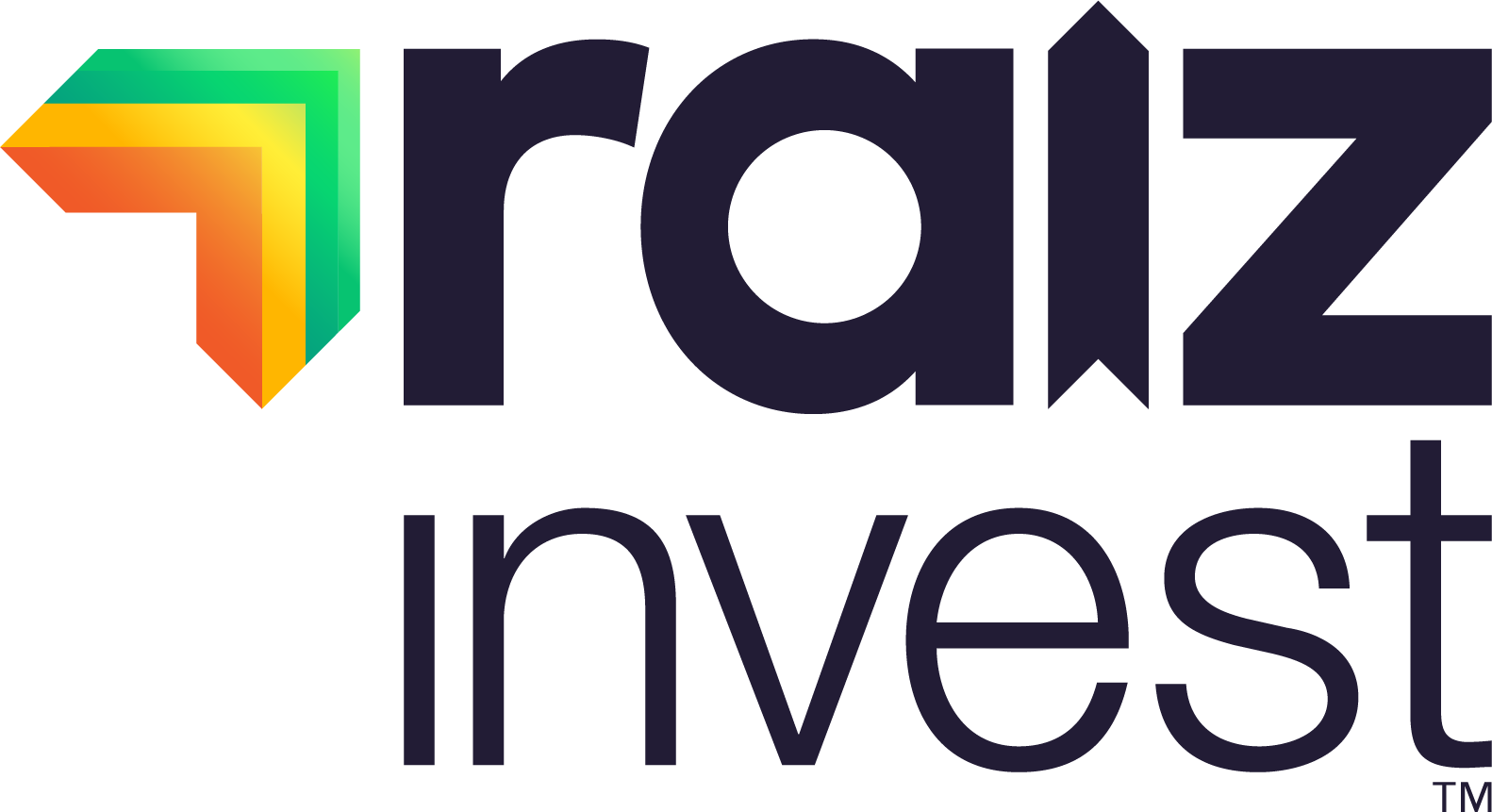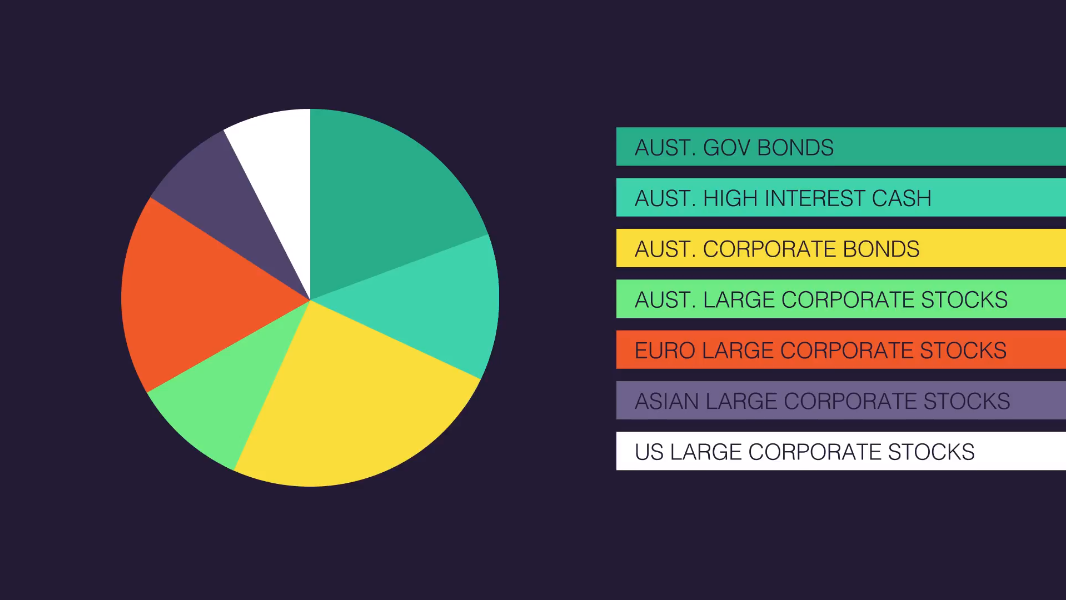Investing into an ETF and how do ETFs differ?

The
Raiz philosophy is to invest small amounts regularly, no matter the market
condition, as this strategy can minimise the risk of investing in markets and
we believe is one of the keys to having a healthier balance over the long run.
All
your investments, whether it be your spare change from round-ups, lump sums or
recurring deposits, are invested into one of the 6 diversified portfolios that
were constructed with help from the Nobel Prize winning economist and father of
Modern Portfolio Theory, Dr. Harry Markowitz.
What
is a diversified portfolio?
To
find the right balance between risk and reward, your money is never invested
into one specific share or company. It is instead invested across a bundle of
shares or bonds that form one financial product, called an Exchange Traded Fund
(ETF).
The
Raiz portfolios are made up of a combination of different ETFs that range from
cash, bonds, Australian and international shares. Every investment you make
will be allocated towards these ETFs. For more information on Raiz fees, click here.
Watch our video on – How our Raiz Portfolios are built
Let’s
take a deeper look into these ETFs:
The
first six are called ‘Large Cap Stocks’
1. Australia
Large Cap Stocks (ASX:STW)
2. Asia
Large Cap Stocks (ASX:IAA)
3. Europe
Large Cap Stocks (ASX:IEU)
4. US
Large Cap Stocks (ASX:IVV)
5. Australia
Social Responsible Large Cap (ASX:RARI)
6. Global
Socially Responsible Large Cap (ASX:ETHI)
What
are large cap stocks?
Large
cap stocks are the biggest companies on their respective country’s stock
exchange in terms of market capitalisation – or total dollar value of a
company. Companies that fall in this category tend to be in established
industries and are major players in their field. Large cap stocks can be a
safer option as their earnings may be more consistent than less-established
companies, making them more likely to show returns over time.
Examples
of Large Cap stocks that your investments can go towards are international
shares such as Apple, Google & Microsoft and Australian shares such as
Telstra, Westpac & Woolworths.
You
can also see all the hundreds of companies that make up these ETFs by searching
for the ETF code or the provider from our product disclosure statement.
7. Australia
Government Bonds (ASX:IAF)
Australia
Government bonds are viewed as more secured and as less risky investment
products than large cap stocks. It differs to stocks as you are instead
essentially lending money to the government at an agreed interest rate. The
government will then pay the interest and return the money that was lent at
maturity. Rather than hold a bond to maturity though, they can also
be traded. The risk is therefore tied to the ability of the Australian
Government to pay you back both the interest and the money that was lent at the
end.
8. Australia
Corporate Bonds (ASX:RCB)
Similar
to government bonds, corporate bonds are a way for Australian companies to
raise money, by borrowing from you. The business will pay the interest and
return the money lent. It can also be traded on an exchange before maturity.
The risk is again therefore tied to the ability of the Corporate to pay you
back both the interest and the money that was lent at the end.
9. Australian
Money Market (ASX:AAA)
This
ETF is invested into the money market, which has the least volatility. The fund
focuses on investing in term deposits and high interest accounts
offered by banks in Australia. As these tend to be short dated, the risk
that a bank cannot repay both the interest and the money back is low.
What
are the allocations for the ETFs?
We
invest your money in a combination of the above ETFs on a sliding scale
depending on how aggressive or conservative you want to be with your
investments. Conservative portfolios will have a bigger allocation in bonds
& cash, while the more aggressive portfolios will have a bigger allocation
in Australian and international shares.
You
will be able to find the exact allocations that makes up your portfolio in
our product disclosure statement.
Example
of allocation for the Aggressive portfolio:

How
can I keep track?
The
Raiz app will give you the daily, monthly and yearly performance of your
portfolio. You are also able to keep track of the individual ETF’s performance
yourself through the web or via a stock app. Keep in mind though, markets go up
and markets go down. Therefore, it is important to look at the long-term big
picture and not the daily fluctuations. You can find more in our blog, The Advantages of Dollar Cost Averaging
Don’t have the Raiz App?
Download it for free in the App store or the Webapp below:

Important Information
The information on this website is general advice only. This means it does not take into account any person’s particular investment objectives, financial situation or investment needs. If you are an investor, you should consult your licensed adviser before acting on any information contained in this article to fully understand the benefits and risk associated with the product.
A Product Disclosure Statement for Raiz Invest and/or Raiz Invest Super are available on the Raiz Invest website and App. A person must read and consider the Product Disclosure Statement in deciding whether, or not, to acquire and continue to hold interests in the product. The risks of investing in this product are fully set out in the Product Disclosure Statement and include the risks that would ordinarily apply to investing.
The information may be based on assumptions or market conditions which change without notice. This could impact the accuracy of the information.
Under no circumstances is the information to be used by, or presented to, a person for the purposes of deciding about investing in Raiz Invest or Raiz Invest Super.
Past return performance of the Raiz products should not be relied on for making a decision to invest in a Raiz product and is not a good predictor of future performance.




